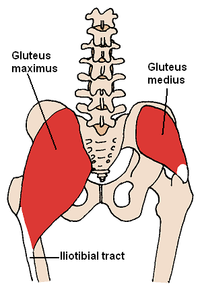
Photo from wikipedia
BackgroundFractures of the greater tuberosity may result from a variety of mechanisms. Missed injury remains a persistent problem, both from a clinical and medico-legal point-of-view. Few studies on this topic… Click to show full abstract
BackgroundFractures of the greater tuberosity may result from a variety of mechanisms. Missed injury remains a persistent problem, both from a clinical and medico-legal point-of-view. Few studies on this topic are available in the literature. We present the clinical and radiological findings of a consecutive series of 17 patients who were diagnosed and managed with undisplaced greater tuberosity fractures.MethodsA retrospective study of a consecutive series of 17 patients who sustained an occult greater tuberosity fracture were performed. Patients sustained a traumatic occult greater tuberosity fracture, underwent shoulder radiographs after trauma in 5 days and they were diagnosed as negative by a consultant radiologist. All patients received a standard assessment using MRI (Magnetic Resonance Imaging) scans Each patient was evaluated for arm dominance, trauma history, duration and type of symptoms and post-treatment Oxford Shoulder Score.ResultsAt the final follow up the mean OSS (Oxford Shoulder Score) was 38.3 (range 17–46; SD 9.11). Three patients required a glenohumeral joint injection for post-traumatic pain and stiffness and three patients required subacromial decompression for post-traumatic impingement.ConclusionsThough undisplaced greater tuberosity fracture can be managed non-operatively with good results, patients with persistent post-traumatic shoulder pain, tenderness and limitation of shoulder function warrant investigation with MRI to identify occult fractures. Prompt identification of these fractures can facilitate patient treatment and counselling, avoiding a source of patient dissatisfaction and litigation.
Journal Title: BMC Musculoskeletal Disorders
Year Published: 2018
Link to full text (if available)
Share on Social Media: Sign Up to like & get
recommendations!